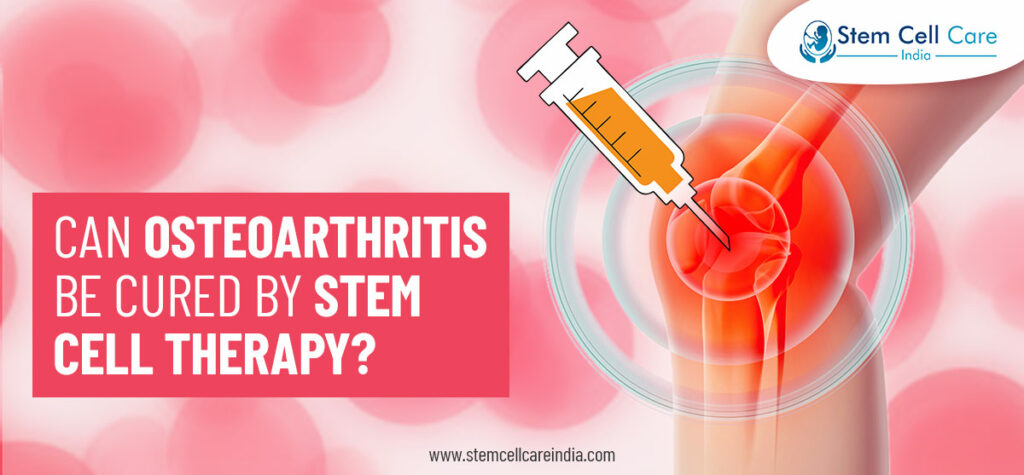Osteoarthritis is a widespread condition, particularly affecting individuals over the age of 50-55. This degenerative joint disease primarily impacts the cartilage in the hip and knee joints, leading to a gradual breakdown that can severely limit daily activities such as walking or climbing stairs. While various treatments aim to alleviate pain and discomfort, many of these options provide only temporary relief and fail to address the underlying joint damage. In advanced cases, joint replacement surgery may be the only viable option, which has its own set of limitations. Therefore, there is an increasing need for therapies that can slow the disease’s progression. One such promising treatment is stem cell therapy.
How Does Stem Cell Therapy Work for Osteoarthritis?
Stem cell therapy presents a novel approach to managing osteoarthritis by focusing on the body’s natural healing processes. Stem cells are unique cells capable of developing into various specialized cell types, including those found in cartilage, bone, and fat tissue. These cells can also help reduce inflammation through the release of growth factors and proteins essential for healing.
In this therapy, stem cells are typically harvested from sources like bone marrow or adipose (fat) tissue. The procedure begins with a medical professional extracting stem cells from the patient’s pelvic bone, which is done with a local anesthetic to minimize discomfort. After collection, the stem cells are processed to concentrate them, and then injected into the affected knee joint under ultrasound guidance. This process aims to stimulate the repair of damaged cartilage and improve joint function, offering pain relief and potentially slowing the progression of osteoarthritis.
Who Are the Best Candidates for Stem Cell Therapy?
Stem cell therapy is most effective for individuals in the early stages of osteoarthritis. Specifically, it has been shown to provide significant benefits for those in stages 1 and 2 of the disease. These early stages are characterized by mild to moderate cartilage loss and symptoms that are less severe compared to advanced stages of osteoarthritis.
For patients in the initial phases of osteoarthritis, stem cell therapy can offer a way to manage symptoms and delay the need for more invasive treatments. However, for those with advanced osteoarthritis, where there is severe cartilage loss and significant joint damage, current evidence does not support the effectiveness of stem cell therapy as a treatment. In such cases, alternative approaches, such as joint replacement surgery, may be more appropriate.
What to Expect from Stem Cell Therapy?
One of the advantages of stem cell therapy is its relatively straightforward and minimally invasive nature. The procedure is usually performed on an outpatient basis, allowing patients to return home the same day. After the treatment, patients might experience mild discomfort and may need to use a walking aid for a short period, typically about two weeks. Following this initial recovery phase, many patients find that they can resume their regular daily activities with improved joint function and reduced pain.
In summary, stem cell therapy represents a promising option for individuals with early-stage osteoarthritis. It aims to repair damaged cartilage and alleviate symptoms by harnessing the body’s natural healing mechanisms. While this therapy shows significant potential for managing osteoarthritis in its earlier stages, it is not currently supported as a treatment for advanced osteoarthritis. As always, patients should consult with a healthcare professional to determine the most suitable treatment options based on the severity of their condition.
Conclusion: Always consult with your doctor or a healthcare professional before making significant dietary changes for joint health. They can provide personalized guidance based on your medical history and current health status.
Note – If you have any health-related concerns, please call us at +91-9058577992 to receive free consultation from our experienced doctors. Thank you.
